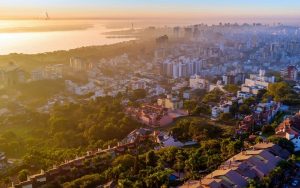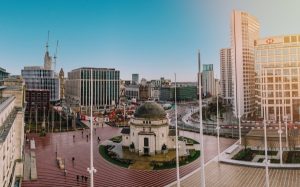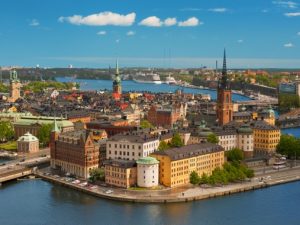Porto or Oporto is the second-largest city in Portugal and one of the Iberian Peninsula’s major urban areas. Porto city proper, which is the entire municipality of Porto. Porto’s metropolitan area has around 1.7 million people. It is recognized as a global city with a Gamma + rating from the Globalization and World Cities Research Network.
Warnings & Dangers in Porto

OVERALL RISK : LOW
Porto is not the safest place for travelers, but you can avoid most of the troubles if you use common sense and take precautions.

TRANSPORT & TAXIS RISK : LOW
Public transport is well-developed and safe. Taxis are convenient for getting around, but sometimes drivers can rip off tourists at exorbitant prices. Make sure the taxi has a taximeter.

PICKPOCKETS RISK : MEDIUM
Like any major city in Porto, pickpockets do happen. Especially on public transport during rush hour. Keep track of your belongings and do not leave bags and wallets unattended on the tables in the cafe.

NATURAL DISASTERS RISK : LOW
The city is not subject to any serious risks of natural disasters.

MUGGING RISK : LOW
The risk of serious robbery and armed attack in Porto is very low. Avoid communicating with suspicious individuals and do not walk late at night in areas remote from the city center.

TERRORISM RISK : LOW
The risk of terrorism is low in Porto. The global risk of terrorist attacks in public areas exists worldwide, so tourists should be vigilant.

SCAMS RISK : MEDIUM
The most common scams in Porto are related to street beggars. Be suspicious of anyone who asks or offers you help.

WOMEN TRAVELERS RISK : LOW
Women traveling alone can feel quite safe in Porto. The main thing is to adhere to the usual precautions and monitor your surroundings.
How Safe Is Porto for Tourists?
Porto is a safe city to travel to.
The crime index here is at a low level.
The main problems are associated with petty theft and vandalism.
Even though pickpocketing is not common in Porto, it can sometimes happen here, especially in tourist places and crowded places.
Traveling by bus or metro is generally safe and is one of the best ways to get from one place to another.
Porto is generally safe if you take the usual precautions, such as walking in well-lit streets at night.
There are beggars and poor people in the city; you should refuse them or walk by; they are usually safe and do not pursue you.
As in any city, keep an eye on your belongings and surroundings.
Do not walk late at night in low-light areas and places.
Avoid drunk people, and don’t get drunk in bars.
The rest of the city is quite safe.
The main thing is to use common sense and keep track of your belongings.
Do not leave phones unattended on tables in cafes – thieves will not think long.
Do I Need a Visa to Visit Porto?
The visa policy of the Schengen Area is set by the European Union and applies to the Schengen Area and other EU member states except for Ireland. The visa policy allows nationals of certain countries to enter the Schengen Area via air, land, or sea without a visa for stays of up to 90 days within a 180-day period.
Which Currency Is Used in Porto?
The euro is the official currency in Portugal. The euro is divided into 100 cents.
How's the Weather like in Porto?
In Porto, the summers are comfortable, dry, and mostly clear, and the winters are cold, wet, and partly cloudy. The best time to visit Porto is from May to September, when the weather is often sunny and warm.
What Do I Need to Know about Airports in Porto?
Francisco Sá Carneiro Porto International Airport is an international airport located in the north of Portugal, in the metropolitan area of Porto, in the municipalities of Matosinhos, Maia and Vila do Conde, 11 km north-west of the city center of Porto.
Should I Get Travel Insurance for My Travels?
A travel insurance policy is a must when visiting a foreign country or city. Make sure you got it before starting your journey; the customs officer may ask for it.
What Are Some Things to Do in Porto?
Porto is a city on the northwest coast of Portugal with majestic bridges and port wineries. The medieval district of Ribeira (translated from Portuguese as “river bank”) is famous for its cobbled streets with cafes and merchant houses. The Church of St. Francis is known for its rich baroque interior decoration, for which carved gilded wood was used. In Porto, visit the Stock Exchange Palace, a 19th century building that was supposed to impress European investors.
Is the Water in Porto Safe to Drink?
Tap water is generally safe to drink in Porto.
Is Uber Safe in Porto?
There is an Uber taxi in the city; you can call a taxi from your smartphone application. The fare will depend on the time of day and the distance traveled.




